Strengthening global robusta production: an update
In 2023, WCR embarked on a journey to begin exploring the opportunities for strengthening global Robusta production through enhanced research and breeding.
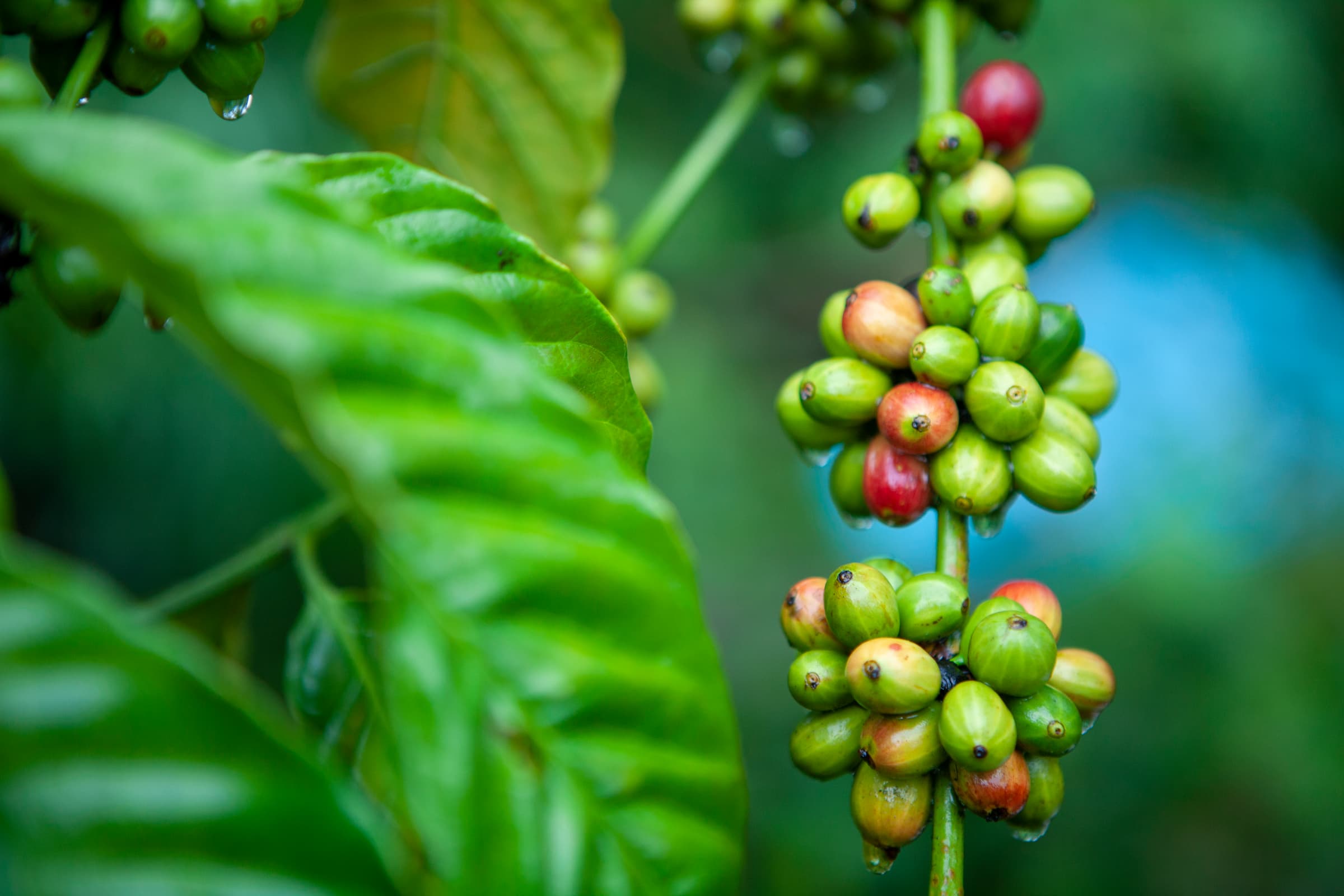
Healthy robusta cherries. Photo by Armin Hari.
Over the last few decades, robusta (C. canephora) has evolved into a major market force in coffee, rising from 25% to 40% of total global coffee production since the early 1990s.1 Going forward, demand is not expected to slow down. Yet robusta’s continued success is precarious and its full potential has yet to be realized.
By 2040, the world may struggle to keep up with rising demand for Robusta just as it currently does for arabica, facing shortages of up to 35 million bags. While robusta is more “robust” in many ways than arabica, it is not immune to climate change or highly damaging diseases and pests. Very little breeding or other improvement efforts have taken place in most producing countries to address these looming challenges, and then there is the enormous potential to improve the species’ long-disparaged cup quality.
With this in mind, in 2023, WCR embarked on a journey to begin exploring the opportunities for strengthening global Robusta production through enhanced research and breeding. Some highlights of our work this year are summarized below.
A clear opportunity for global robusta breeding
In 2022, as a response to member company input that reflected an increasing interest in robusta, WCR initiated a study of the potential for breeding to support the industry’s robusta needs. In October 2023, WCR published the results of this study in a white paper focused on trends for future robusta supply and demand, as well as existing resources given to robusta genetic improvement, in order to examine possible roles for a collaborative, global robusta breeding program. The study found that:
- If rising consumption and expected negative impacts of the climate crisis come to fruition, the world may face robusta shortages in 2040 of up to 35 million bags.
- Production of robusta has become increasingly concentrated among a small group of six countries, which are responsible for 95% of output by volume, while other countries have decreased production. This concentration represents meaningful production risk and potential further exposure to the impacts of climate change.
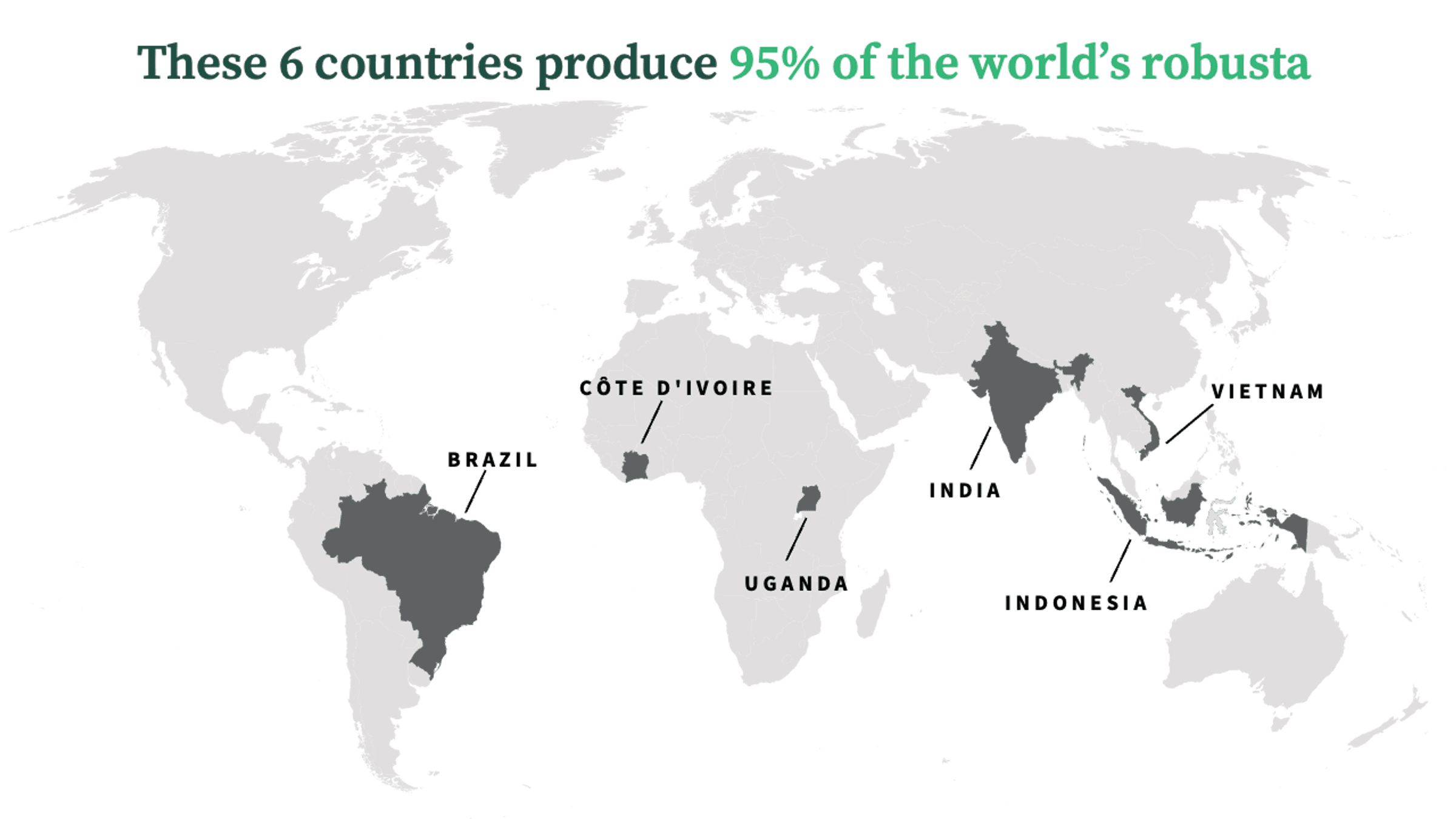
Robusta production by country.
- As robusta is increasingly being substituted for arabica, the supply of higher-quality robusta must also increase, or else the perceived quality of blends will decrease and may face consumer rejection.
- Globally, current levels of investment in robusta research and breeding are not sufficient to meet projected shortages or the evolving quality needs of the market.
- Overall, existing robusta breeding programs are positioning themselves for innovation. A global, collaborative effort aimed at enhancing interaction and sharing of genetic resources could lead to faster advancement of breeding programs.
The report was commissioned from AbacusBio, a genetic-improvement consultancy that operates at the intersection of science and business.
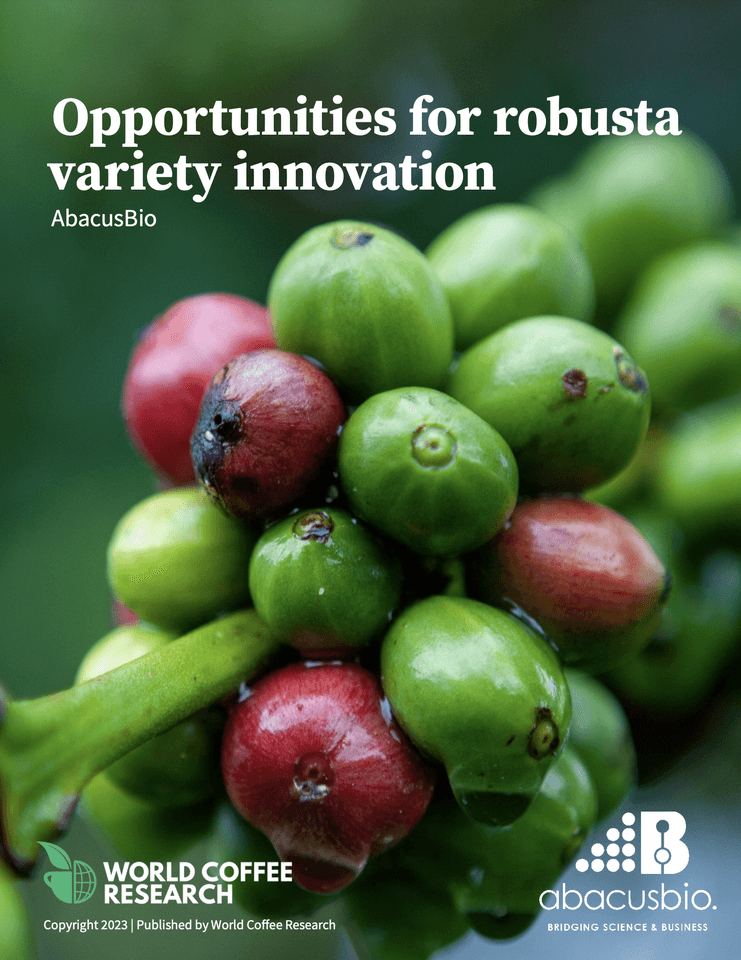
Opportunities for robusta variety innovation
Robusta breeding to begin in 2024
With clear opportunities defined for robusta breeding, WCR negotiated access to a significant collection of robusta genetic materials generated by Centre de Coopération Internationale en Recherche Agronomique pour le Développement (CIRAD). Subsequent analysis of this collection has confirmed that it contains valuable and unique genetic materials that are not widely utilized in commercial robusta varieties. The collection will be used to initiate breeding activities (e.g., crossing key materials together) in 2024.
In parallel to initiating crosses, WCR is in conversation with key countries to participate in a global robusta breeding network, with a focus on supporting the continued supply of robusta from diverse origins. WCR expects to confirm the network participants by the end of 2024. Partners will have access to conduct further breeding with these materials and to commercialize promising clones while modernizing their breeding approaches and contributing to an invaluable global trial network to ensure clones’ climate resilience.
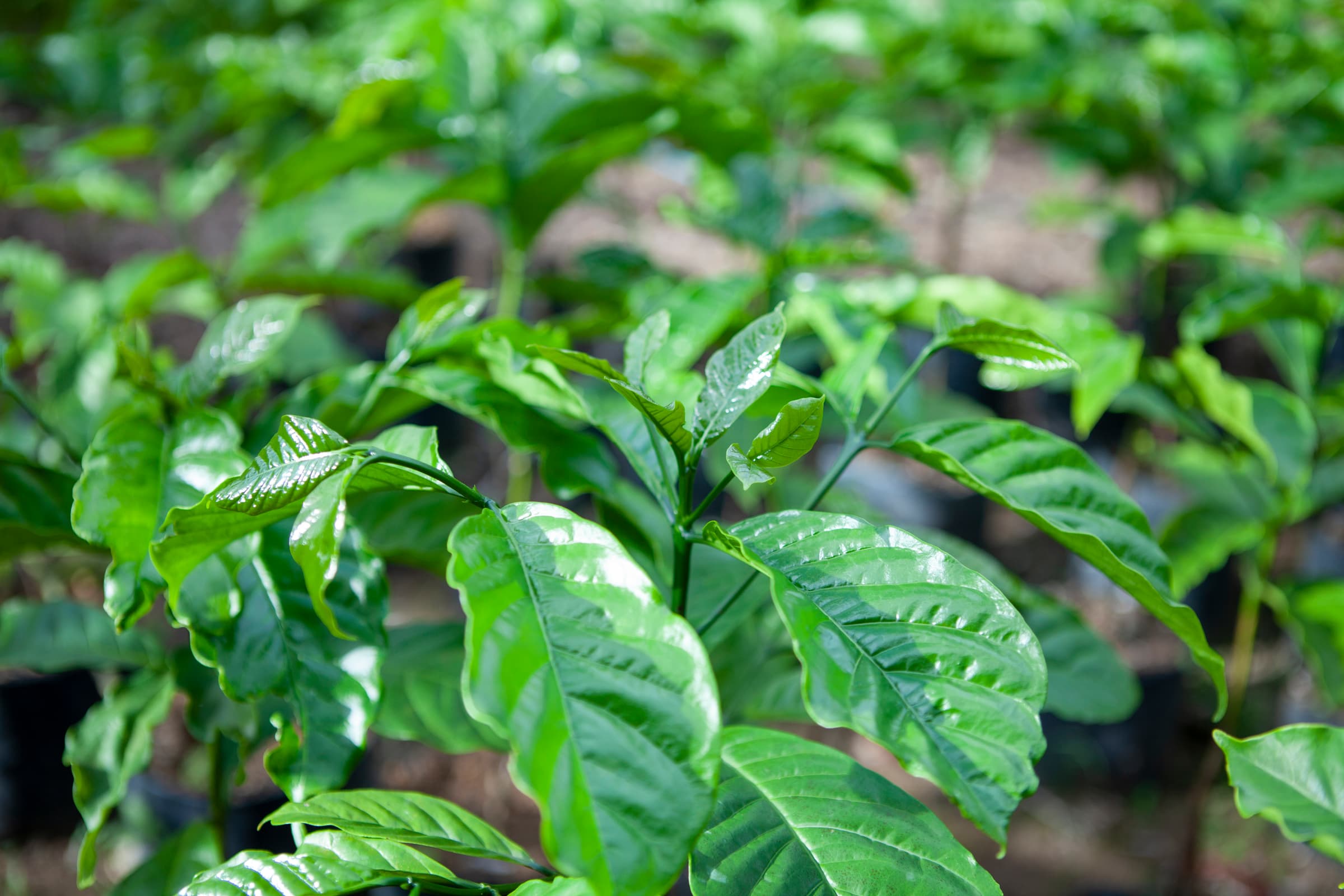
Getting plants to farmers
This year, WCR initiated work to understand challenges and opportunities for robusta propagation via a project in Uganda, funded by Strauss Coffee. The project aims to increase the ability of local nurseries to supply improved varieties in Uganda. The 10 clonal lines, which have been commercially released under the name NARO Kituza Robusta (KR) 1-10, are resistant to Coffee Wilt Disease (CWD), which can increase farmer income up to 250%.2 (KR clone information can be found in the WCR Coffee Varieties Catalog.) The project’s goal is to move 100,000 healthy KR plants into farmers’ hands, while also increasing the future supply of good-quality plants by increasing knowledge in nursery operations about how to propagate healthy, disease-resistant plants. To that end, UCDA, the national institution in Uganda responsible for certifying nurseries and farmer extension, engaged WCR to train hundreds of nursery operators in the Greater Masaka region on good agricultural practices in nurseries. As well, WCR was requested to train all UCDA extension officers across Uganda on grafting Robusta.
To date, nearly 50,000 KR plants have been supplied to farmers, along with information about managing the varieties. In addition, 77 UCDA extension officers and 393 nursery operators have been trained on good agricultural practices in nursery operations. A set of open-access training videos is now available online here. A manual to instruct nursery operators in grafting CWD-resistant robusta scions onto drought-tolerant rootstocks for increased plant health has been published; UCDA extension officers and NaCORI staff have been trained in the technique.
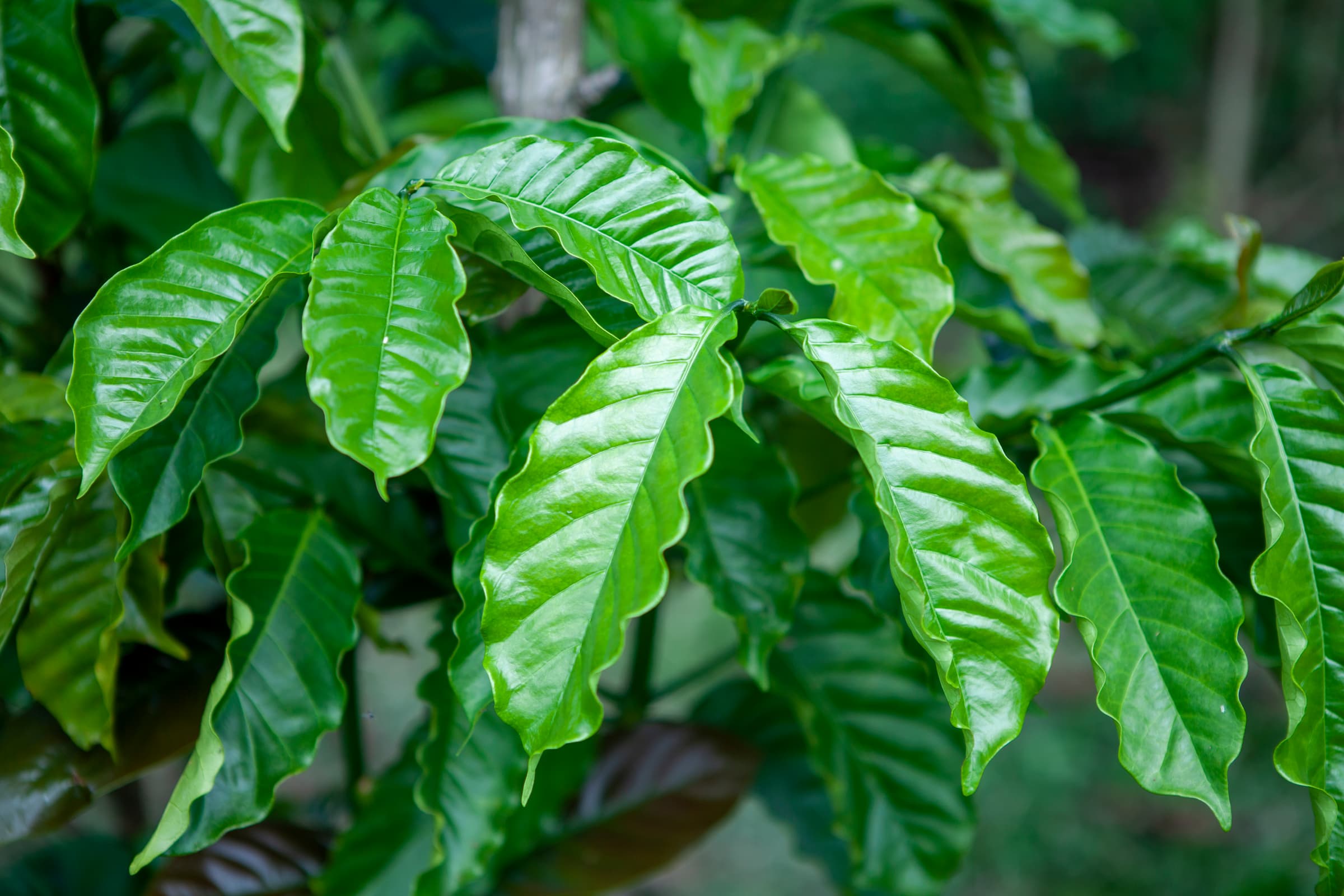
Healthy robusta leaves. Photo by Armin Hari.
Advancing knowledge of robusta varieties—new resources!
In 2023, we created numerous resources to advance understanding of the robusta landscape and support enhanced production.
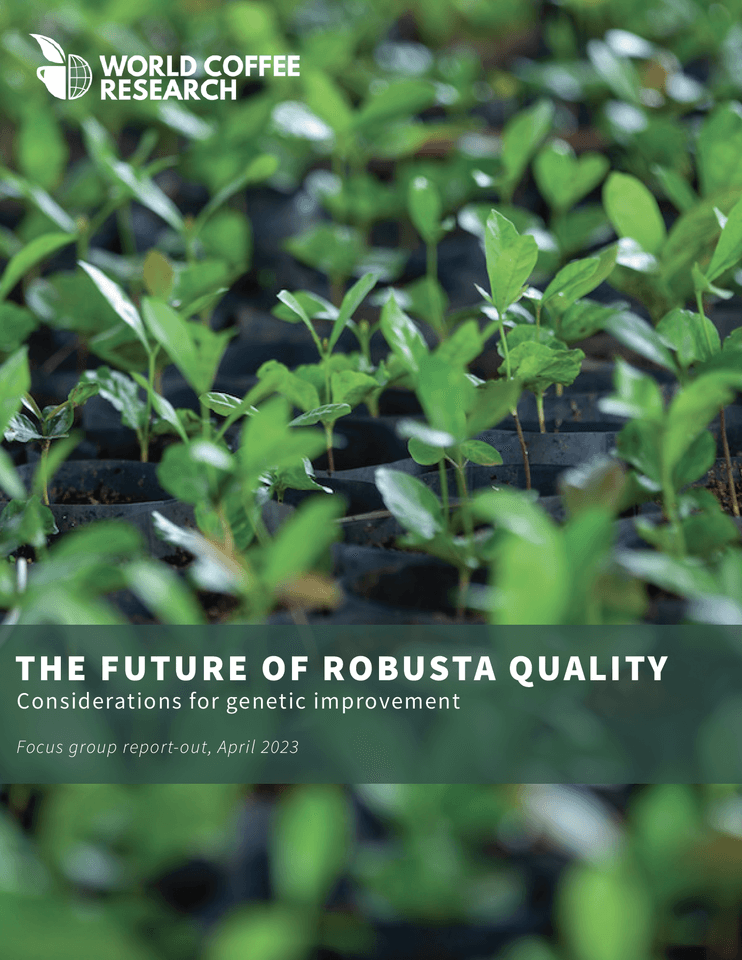
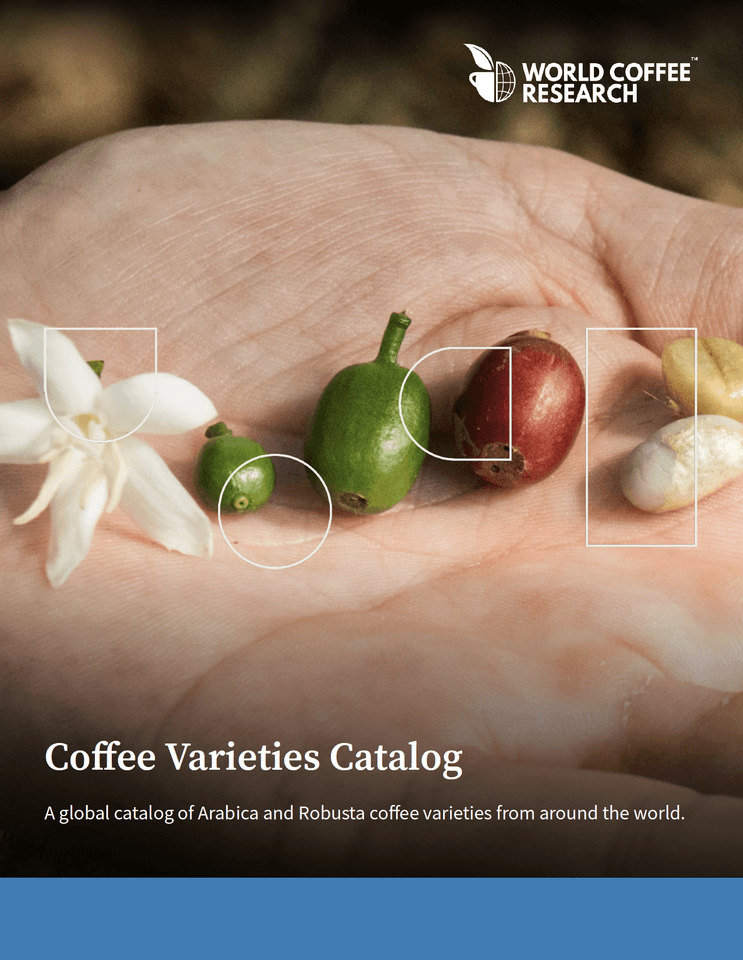
Coffee varieties catalog
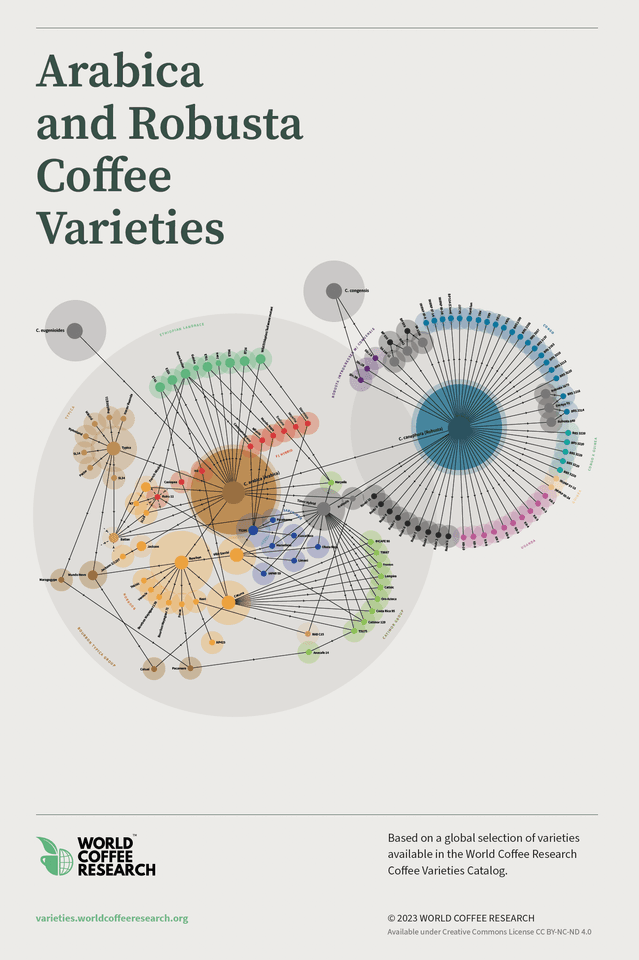
Arabica and Robusta Coffee Varieties Poster
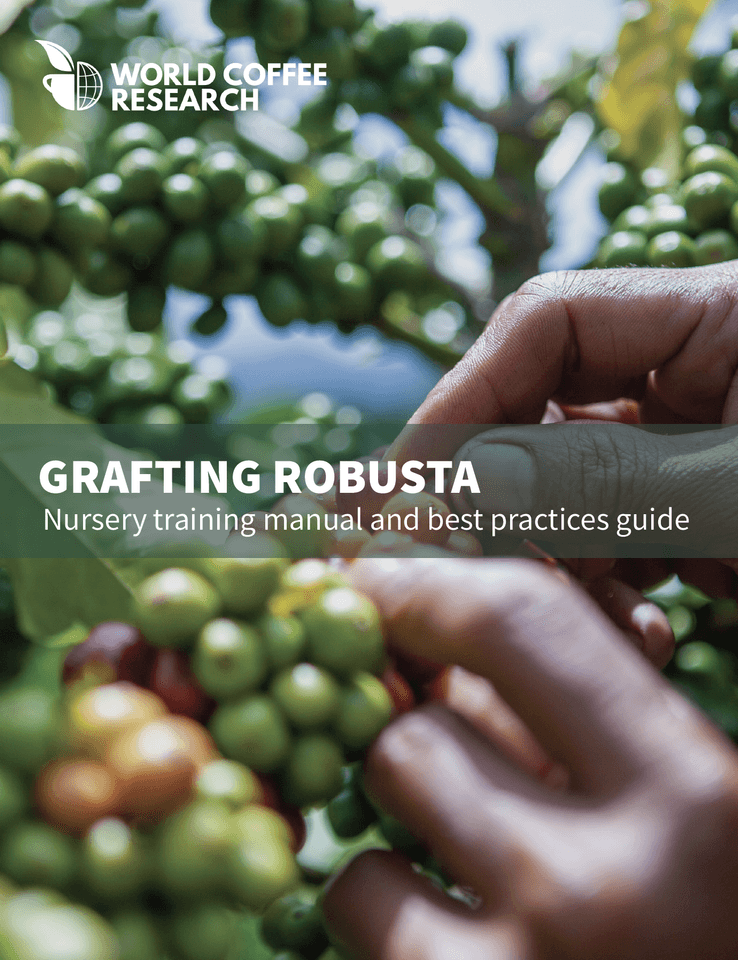
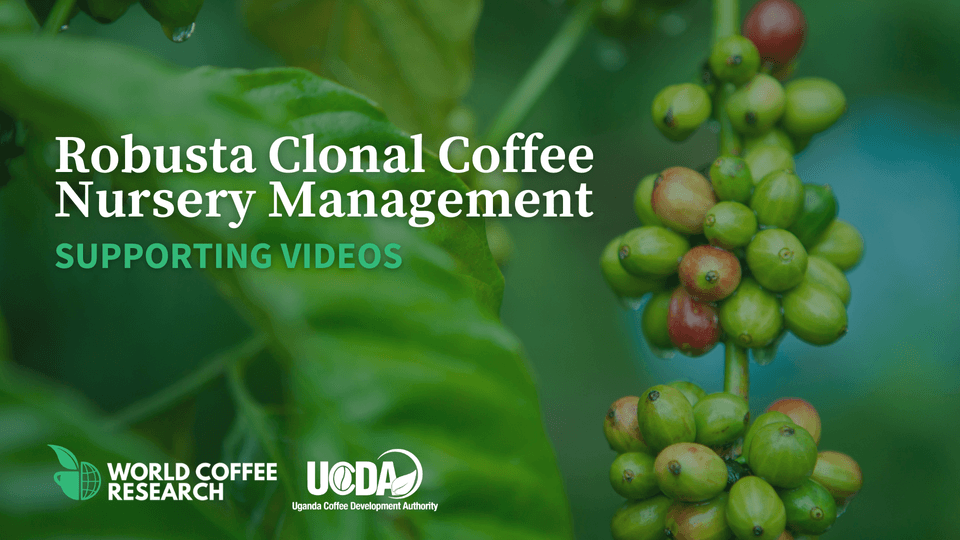
Robusta Clonal Coffee Nursery Management: Supporting Videos
What's next?
Enhancing global robusta production and increasing quality is a significant undertaking. In 2024, WCR is increasing investment in robusta to get a global robusta breeding program off the ground (official launch in 2025).
These are important steps as we build a robusta program to respond to the industry’s need for a secure supply of quality robusta in the decades ahead.
1See Opportunities for Robusta Variety Innovation, Table 5 (p. 13).
2Lybbert, T., Diiro, G., Kawooya, D., Wunsch-Vincent, S. (2018). Enhancing Innovation in the Ugandan Agri-Food Sector: Robusta Coffee Planting Material & Tropical Fruit Processing. World Intellectual Property Organization. https://www.wipo.int/edocs/pub...